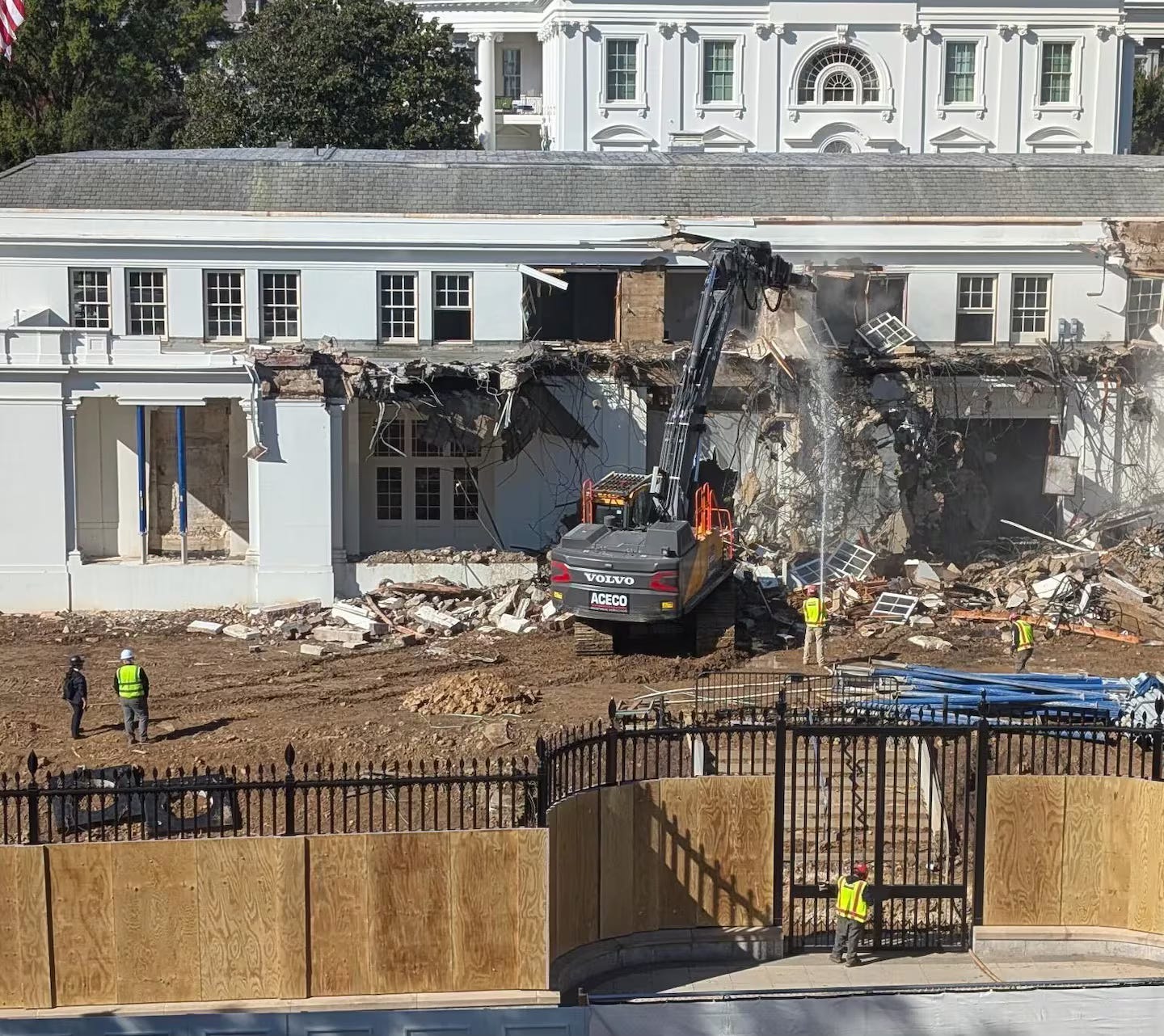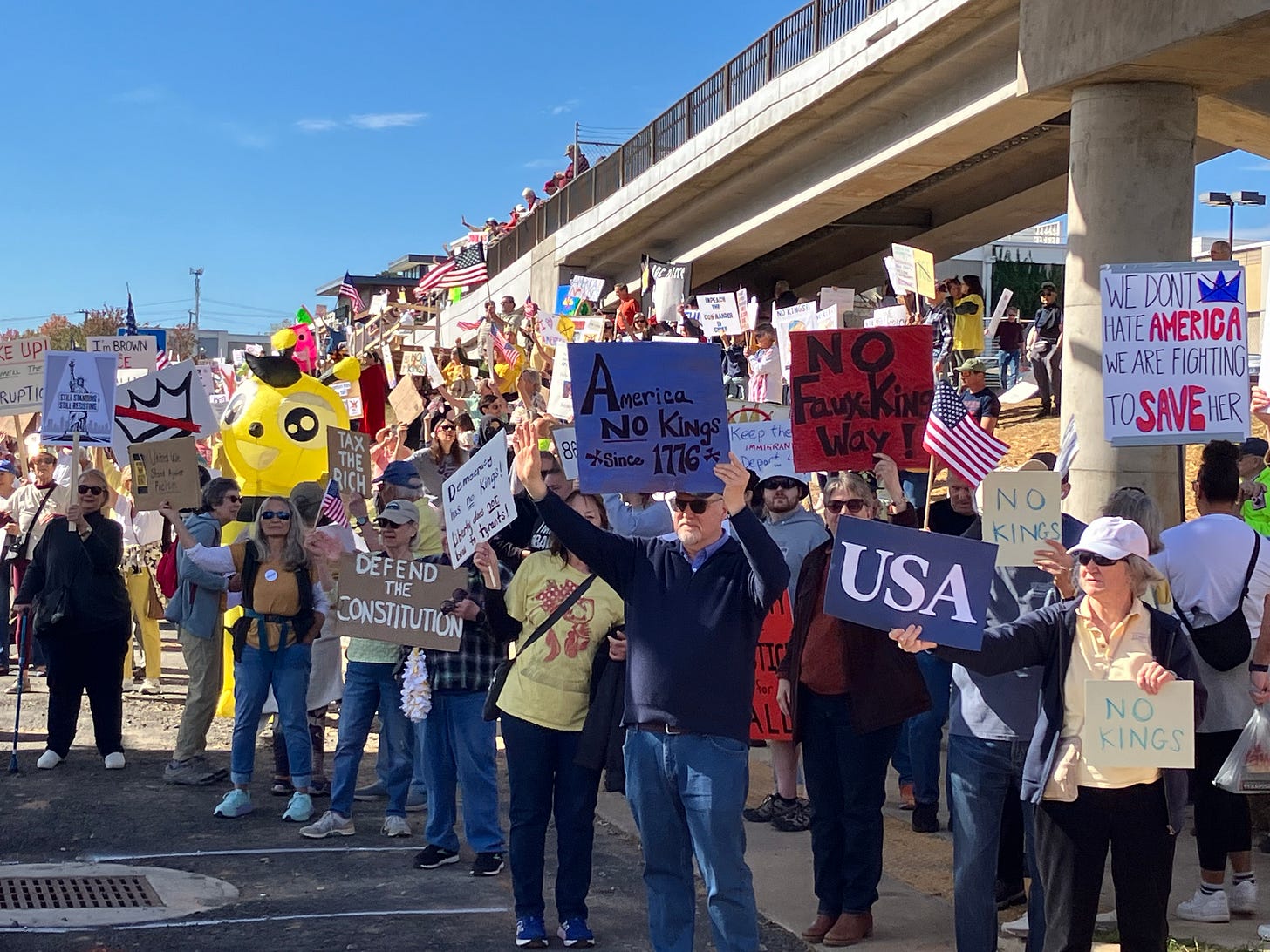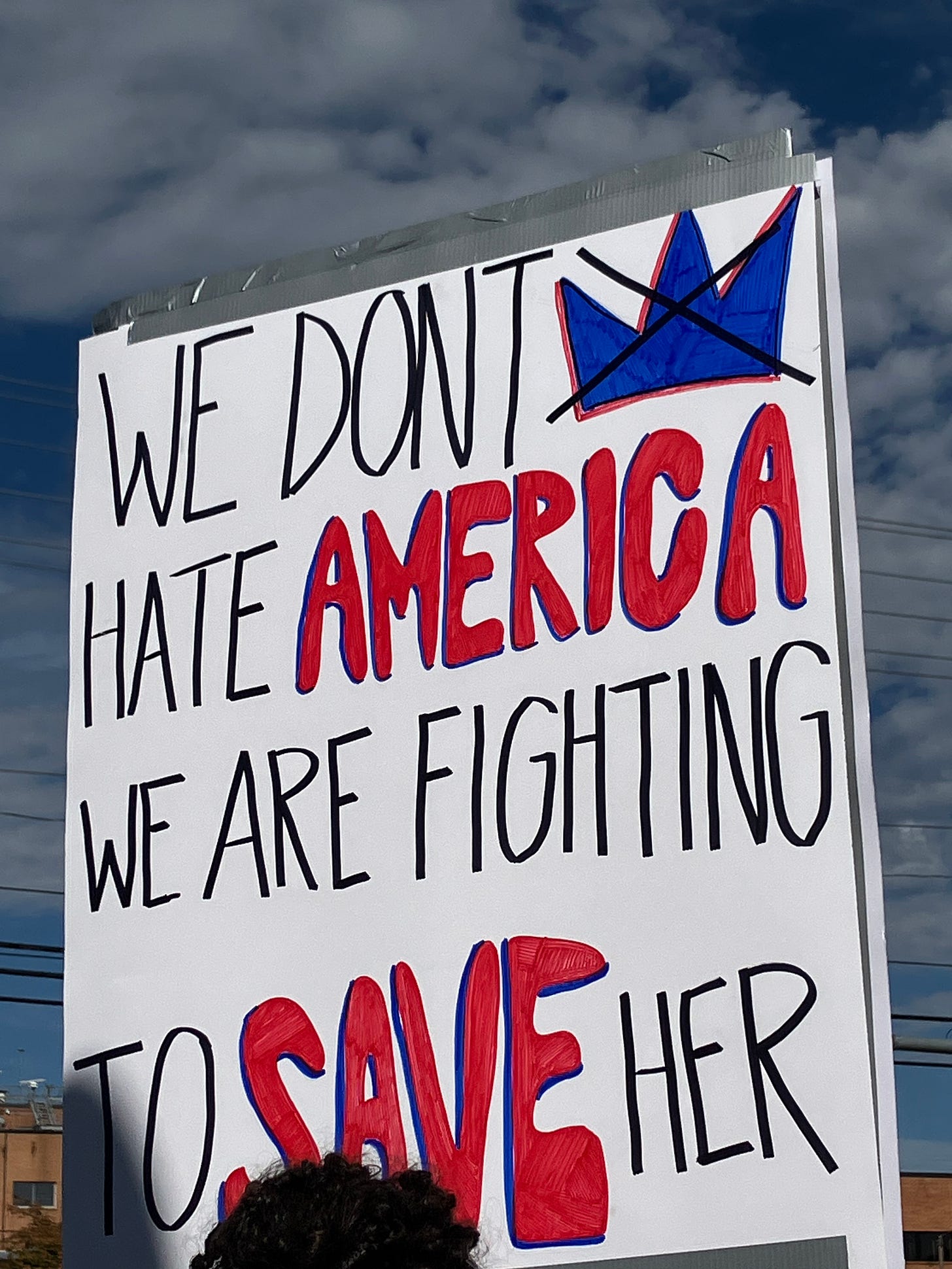The Last Remnants of the Old Republic
The No Kings protests held last weekend are a sort of a turning point, because they highlight an important trend in Trump’s second term: The elites have capitulated, but ordinary people have not.
In one institution after another—the media, universities, the business world, big law firms, and on and on—people in positions of power have frequently caved in at the first touch of pressure, proving unprepared to stick their necks out and assert their independence from a strongman.
That has begun to turn a little. Given a green light by people who know better, Donald Trump has tried to foist onto nine major universities a “compact” that would give him ideological control. See a good analysis from Walter Olson on the lawlessness of this proposal and particularly its “retroactive push-button guillotine” that would make universities completely dependent on Trump’s day-to-day whims: If they anger Trump, he can not only cut off their future funding but claw back all of their past funding. Seven of the schools have already rejected this deal, and only one—the University of Texas, which is no doubt trying to appease the state’s ultra-MAGA governor—has signaled openness to surrender. Yet here’s a sad update: The University of Virginia rejected the “compact” while caving in on a different Trump shakedown.
Maybe somebody ought to write a book about all of this. Oh, wait, I already have. Pick up a copy.
The American people have been doing better than the elites. The pace of public protest against Trump has been far greater than in his first term, and at last weekend’s No Kings rallies as many as 7 million people showed up across the country, the largest single day of public protest since 1970. (See an overview of all of these statistics from “Strength in Numbers,” my newest go-to site for “data-driven journalism.” For other issues, by the way, I can also recommend the wonderfully named “Graphs About Religion.”)
As a former organizer in my local Tea Party movement, I can’t help making some comparisons.
The one thing I can tell you for sure is that this is much bigger. Our biggest Tea Party rally in Charlottesville was on the order of 700 or maybe 1000 people. Most events were closer to 300. I went to the Charlottesville No Kings event last Saturday, and the turnout was clearly in the thousands—the report gives an upper estimate of 10,000, which is probably too high, but the event was spread out over a very large area surrounding one of the major intersections in town.
Yet I was mostly struck by how similar it is. This is a parallel that might not please some people on both sides, but it’s true. What jumped out immediately was the wild diversity of hand-made signs and costumes. Here’s a roundup of some from events across the country, but I saw a few locally that were better.
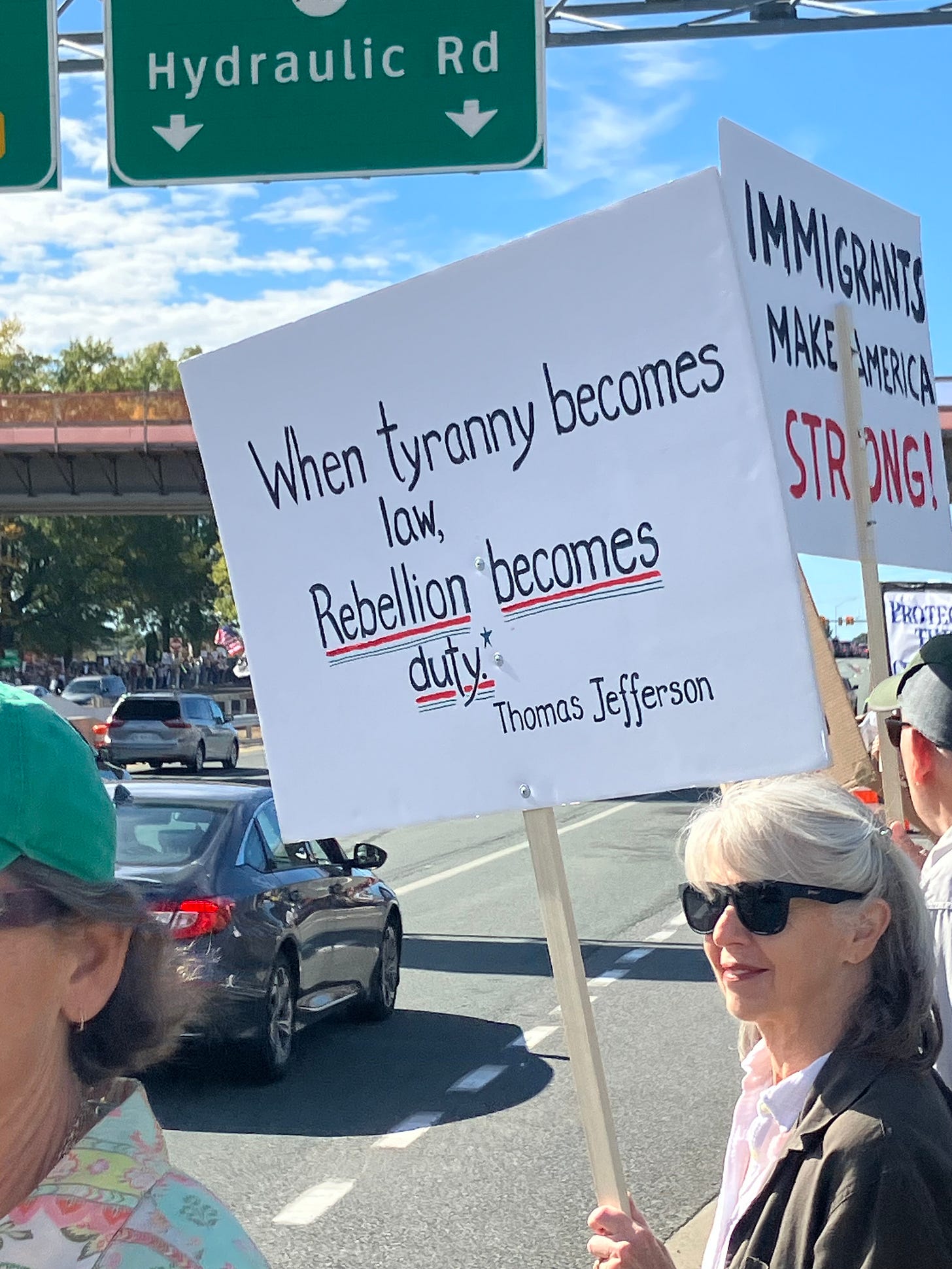
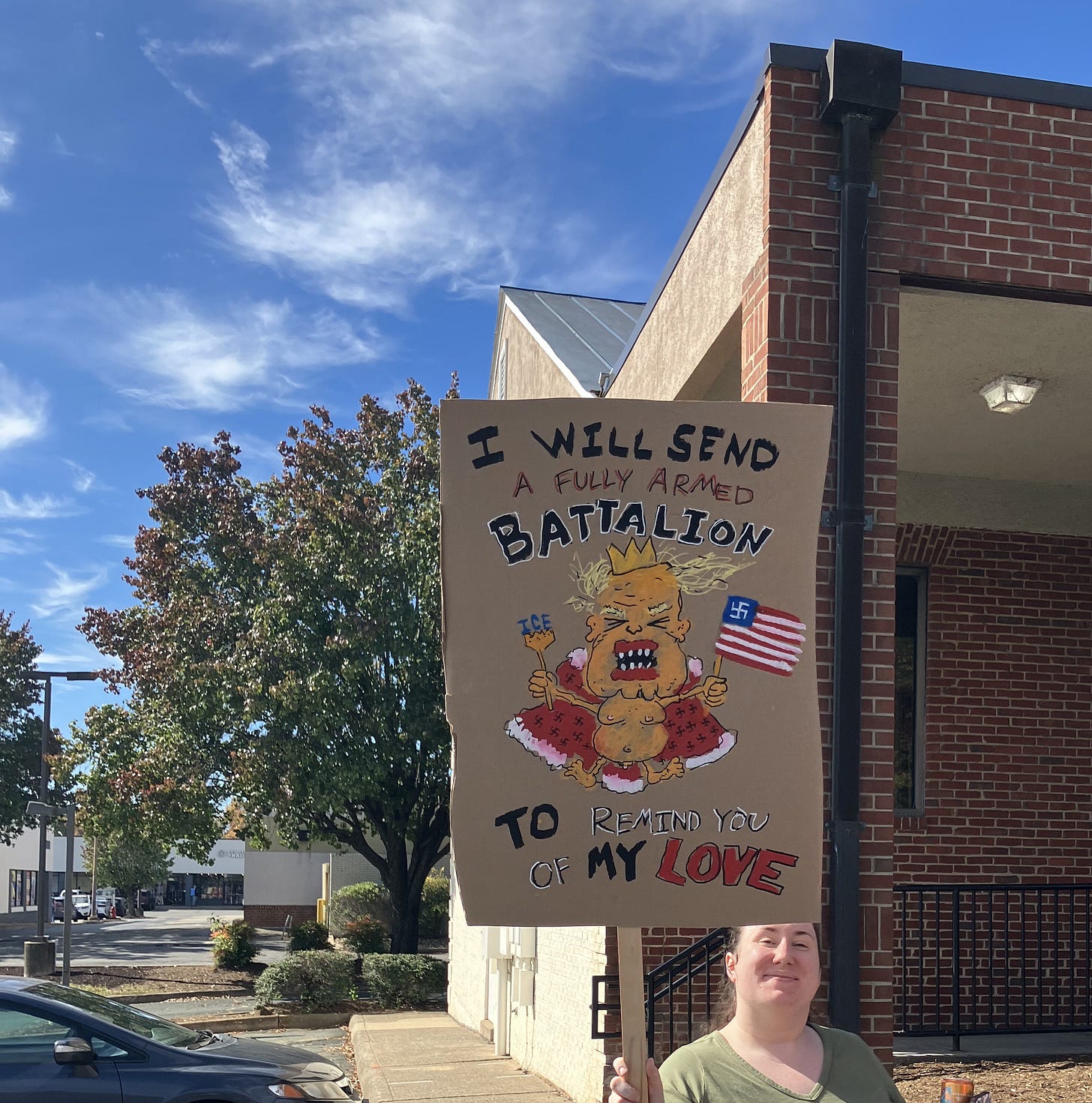
These hand-made, individualized signs are the mark of a truly grass-roots movement.
And of course—of course—the frogs were there.

This all began with the Portland Frog, a story reported nicely by USA Today.
Inspired by the Portland Frog, a protester who began dressing in an inflatable frog costume to attend the protests, Operation Inflation gives away costumes to people protesting ICE to “help deflate (pun intended) the tensions surrounding protests,” according to its website.
When a video of the Portland Frog getting pepper-sprayed went viral, Brown saw how the narrative on the protests changed.
“We were watching the news on that and how the rhetoric around all of it shifted,” Brown said. “It wasn’t some ‘violent Antifa protester’ who gets maced, but instead frog.”
After that, Operation Inflation provided costumes to protesters free of charge, and more people started to dress up. Brown says the change affected how the demonstrations have been received.
This indicates the dog that isn’t barking—the complete absence of violent antifa and “black bloc” protesters, the kind of people who rioted and set fires and functioned to undermine and discredit the George Floyd protests in 2020. They just haven’t shown up this time. Maybe a lot of people learned how not to protest—or maybe the far-left posers are too busy not firebombing a Walmart and can’t be bothered to show up alongside normie liberals to protest a boring issue of constitutional structure. Which just shows how useless they are when it really counts. There is a lesson there.
But above all what works about No Kings is the simplicity of its message, which is literally “no kings.” It’s seven letters, two short words, and a concept so basically American that anyone can rally around it, including—no, make that especially—a former Tea Party guy.
And Trump could not help but to reinforce this message. He posted a video of himself putting a crown on his head while politicians kneel to him, and another that—OK, I can’t bring myself to describe it, so I’ll quote a New York Times commentator.
On Saturday, perhaps stung by the enormous nationwide “No Kings” protests, Trump posted an AI-generated video on Truth Social that inadvertently captured his approach to governing. In it the president, wearing a crown, flies a “Top Gun”-style fighter plane labeled “King Trump” above American cities crowded with demonstrators, dumping gargantuan loads of feces on them.
In response to the message of “no kings,” Trump has once again announced to the country that yes, he intends to reign as a king—but one without a shred of dignity.
As to what concretely the No Kings protests accomplished, one might as well ask the same of the Tea Party protests. They serve as encouragement, to show people they are not alone in opposing Trump, which is especially important given the capitulation of the elites. And they serve as a measure and warning of the sheer size of that grass-roots reaction.
I mentioned that the Tea Party rallies were smaller than this, yet they were the early warning of a congressional wave election in 2010 that brought 63 new Republicans to the House of Representatives. Since Democrats go into next year’s election already almost evenly matched with Republicans, a similar swing toward Democrats would give them a massive majority; if the swing is even a little bit bigger that 2010, it would give them a two-thirds supermajority in the House.
Gaining two-thirds of the Senate would require Democrats to run the table, denying the re-election of virtually every Republican Senator running in 2026. Given how many of them have decided not to run for re-election, I think we could be surprised about the Senate results, but perhaps not that surprised. That’s a shame, because a two-thirds majority is what we would need to do the most important things that are required right now—from impeachment to constitutional amendments.
But a supermajority in the House is not impossible—and that would still make some very interesting things possible.
The Last Remnants of the Old Republic
The first thing they should do, if Democrats do get a two-thirds majority in the House, is to expel Mike Johnson (presuming he doesn’t lose to a challenger).
As Speaker of the House, Johnson has been deliberately sabotaging Congress as an institution. Consider the case of Adelita Grijalva, who was elected by an overwhelming margin in a special election in Arizona exactly a month ago, on September 23. Yet Johnson has refused to officially swear her in, obstructing her from taking her seat in Congress and even from opening her congressional offices.
Some attribute this to one reason in particular.
Ms. Grijalva has pledged to add her name—providing the last necessary signature—to a bipartisan petition to force a vote on a measure demanding that the Trump administration release files on the investigation of the deceased sex offender Jeffrey Epstein.
Look, I haven’t been all that excited about the Epstein files. It seems too much like the “one weird trick” for the opposition in the second Trump administration, just as the birth certificate was for Republicans in the early years of the Obama administration. You have undoubtedly seen those ads promising “one weird trick for how to get rid of belly fat,” when the actual one weird trick is just to eat less and exercise. Similarly, the only one weird trick for politics is to do a good job of convincing the public and win the next election. But people long for a shortcut—a sudden revelation that will bring down the president.
And yet, seeing how much the Trump administration and Republican leaders are willing to do to shield the Epstein case from further scrutiny, I have to wonder if there really is something big there, if not for Trump, then for other prominent men. See an excerpt from a posthumous memoir by one of Epstein’s victims, or just ask the former Duke of York.
But I actually think there’s something far bigger and more ominous going on here. What Johnson is testing is whether he, rather than the voters, can decide who is a member of Congress.
Remember that this was the big issue behind the January 6 riots at the US Capitol. Trump wanted the existing Republican leadership of Congress to decide who won the 2020 presidential election, overriding the choice of the actual voters. Yet that is exactly what Johnson is doing right now, abusing his position as Speaker to deny the constituents of Arizona’s seventh congressional district their right to representation.
Then put this in the context of the No Kings rallies, which clearly preview a Democratic wave in next year’s House elections and the loss of the Republican majority, despite their extravagant efforts at gerrymandering. What Johnson is actually calling into question is whether the current Republican majority in the House can simply refuse to recognize that election result and prevent their replacements from being seated. If the Speaker can indefinitely prevent a duly elected member from being sworn in, why not?
Or perhaps it is even worse than that. I advocated that Democrats use their power over federal spending to force concessions from the Trump administration. But the Republicans’ response has been telling, particularly under Johnson’s leadership in the House. They are not negotiating, nor are they feverishly trying to hammer together legislation that would authorize continued government spending. Instead, the House has met for only a few days in the past three months and has not convened at all since September 19.
Meanwhile, Donald Trump has been moving around money without congressional authorization to continue paying the US military; ICE has been placing massive new orders for weapons, including (maybe) missiles; and Trump has been moving ahead on his illegal and unannounced demolition of the East Wing of the White House—without being slowed down at all by the lack of congressional authorization for anything he is doing.
If you look behind all the smoke and the rhetoric and simply ask functionally what is happening, you will conclude that for the past three weeks, Donald Trump has been governing without a Congress.
That’s what is really happening in this shutdown.
Keep reading with a 7-day free trial
Subscribe to The Tracinski Letter to keep reading this post and get 7 days of free access to the full post archives.


